In 1935, Fred Luther, an employee of Chrysler, embarked on a daring attempt to break the outright land speed record on a motorcycle at the Bonneville Salt Flats. This endeavor was driven by rumors of a $10,000 prize for the first motorcycle to exceed 300 mph. However, it was later discovered that this prize was a hoax.
Fred Luther’s employment at Chrysler played a crucial role in his pursuit of the speed record. His position within the company gave him access to resources and technical expertise, which were instrumental in the construction and modification of the motorcycle used for the attempt.
The Motorcycle’s Design and Construction
The motorcycle designed for the record attempt was a unique and highly customized machine. It was built around a Henderson X frame, which was stretched to accommodate a larger engine. The bike measured 115 inches in length, making it significantly longer than standard motorcycles of the time.
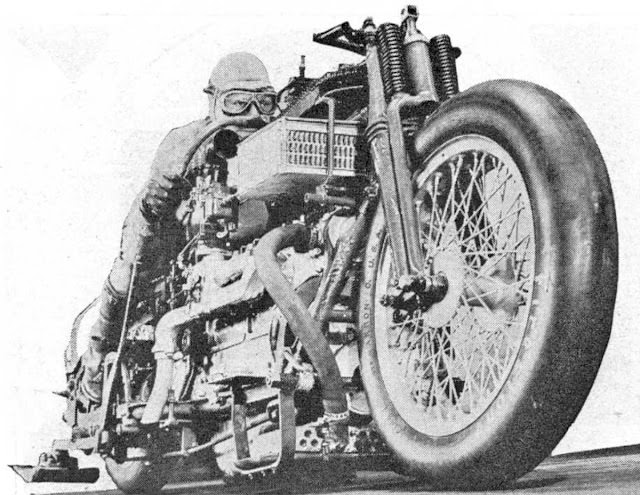
A pivotal aspect of the motorcycle was its engine. Luther persuaded Plymouth to supply him with a PF six-cylinder engine and transmission. This engine was then sent to Harry Miller, a renowned engineer, for tuning. Miller’s modifications increased the engine’s output to 125 horsepower at 4,500 rpm. To enhance performance, non-essential components like the fan and generator were removed.
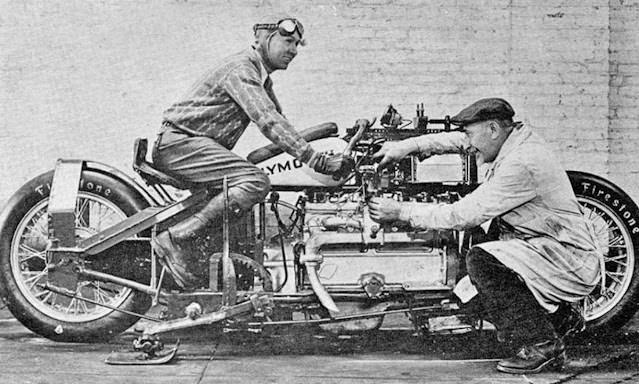
Steering Mechanism and Brakes
The motorcycle’s steering system was unconventional. It used two sprockets connected by a chain, linking the front forks to the handlebars. This design was necessary due to the bike’s elongated frame and the positioning of the engine.
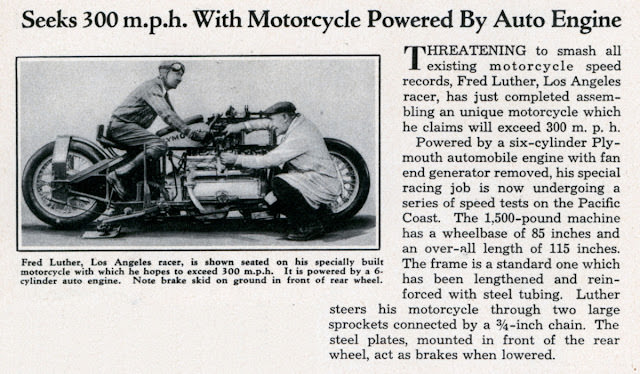
For braking, the motorcycle relied on two pads located just in front of the rear wheel. These pads were lowered to contact the ground, slowing down the bike. This rudimentary braking system was a critical aspect of the bike’s safety features.
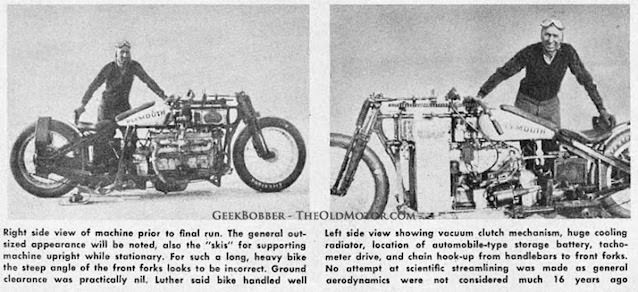
The Attempt at Bonneville Salt Flats
Prior to the official attempt, Fred Luther conducted several shakedown runs to test the motorcycle’s capabilities. These trials were essential for making final adjustments and ensuring the bike’s readiness for the high-speed attempt.
In March 1935, Sir Malcolm Campbell, in his vehicle Bluebird, had set a new land speed record of over 301 mph. Against this backdrop, Luther commenced his attempt at Bonneville Salt Flats. On his initial run, he reached a speed of 140 mph. Gaining confidence, Luther pushed the motorcycle further on the return run.
The Mechanical Failure and Result
During the attempt, while traveling at 180 mph in second gear, the motorcycle experienced a catastrophic mechanical failure. A connecting rod broke, causing significant damage to the engine. Despite this setback, Luther managed to bring the motorcycle to a stop without sustaining any injuries.
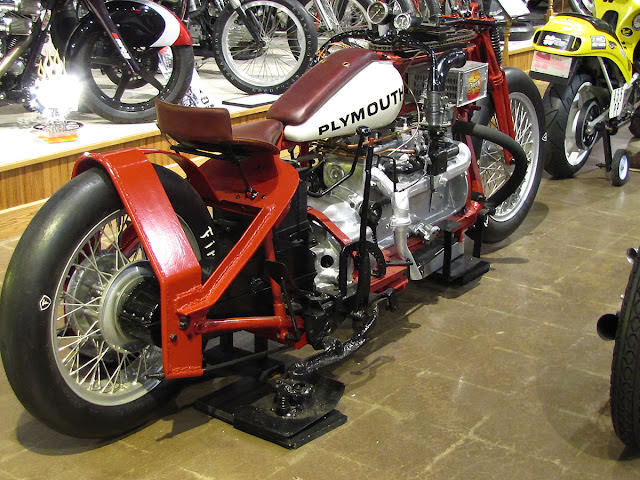
Although Fred Luther did not achieve his goal of breaking the land speed record, he managed to set a two-way average speed of 160.33 mph. This achievement was notable given the technical challenges and the rudimentary nature of the motorcycle. After the attempt, Luther kept the frame of the motorcycle as a reminder of his adventurous endeavor.


